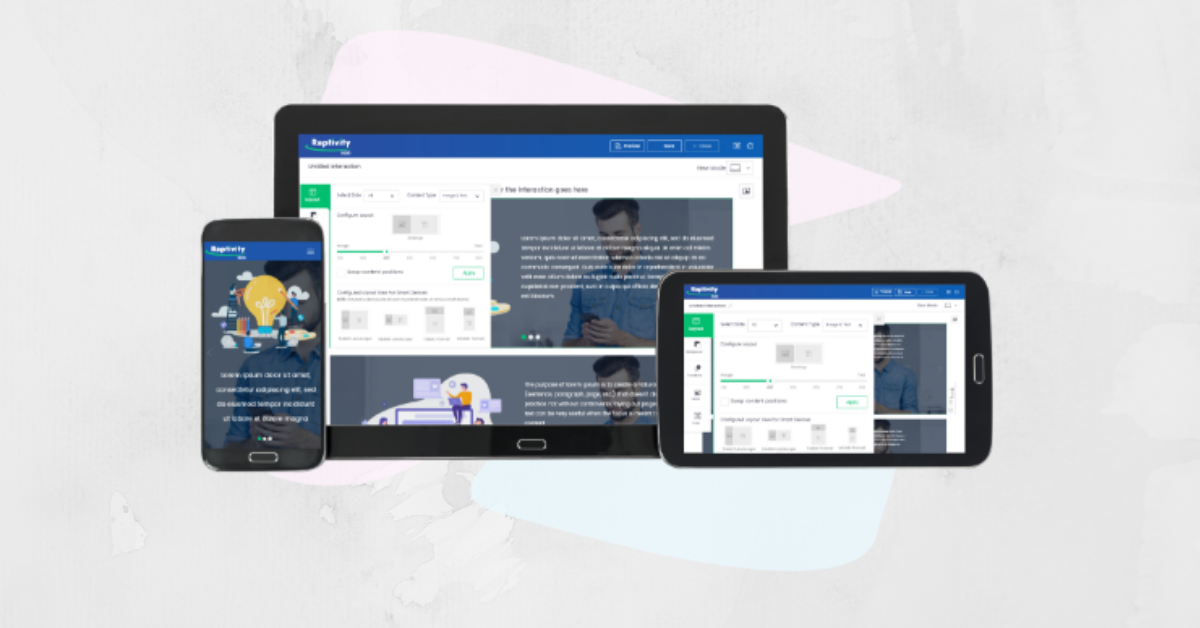6 Challenges That Corporate Trainers Face

Corporate trainers are responsible for one of the most crucial functions in the workplace – learning and development. Their role has always been noteworthy but is specifically vital today because everything is changing so rapidly, be it technologies, tools, or processes. It is essential that organizations up-skill or re-skill employees quickly, as needed, and corporate trainers have a big role to play in the same. But like any other function, corporate training also comes with its own share of hurdles. Most trainers do face some common challenges that need to be overcome for training to be successful. Here are some of those.
-
Low Learner Enagagement

-
Inadequate Resources and Shoestring Budgets

-
No Connection to Practical Life

-
Limited Time for Course Development

-
Integration with Organizational Systems

-
Finding the Perfect eLearning Tool

There is no worse nightmare for a trainer than disengaged learners. Learner engagement and improved performance are the ultimate learning objectives of any kind of training or learning programs. It is the absence of meaningful interactivity that disengages learners and impacts their performance. You cannot expect high engagement when your course is in the form of flat PowerPoint slides, lacks interactive assessments, games, or role-plays, does not present content in an appealing format, is too long, or is simply a page turner module that does not require much interaction from the learners’ end. For learners to be fully engaged, you must provide them with interactive learning activities and experiences. Use cool displays, fun games, simulations, or quick quizzes to make your training enjoyable.
Most corporate training projects need to be delivered using limited resources and within shoestring budgets. In many cases, there are no resources available for trainers to design and develop the course. Ironically, corporate training budgets are generally low too, making it difficult to even outsource development. Stretching the budget is not always possible and could also have other repercussions. So, how do you tackle this? Investing in a good and affordable eLearning or training development tool could be your best bet. Choose a tool that fits in well with your ecosystem and helps you create effective learning with minimum resources.
Good training should always get learners to change their behavior or perform in a certain way, and not just mug up information to pass an assessment. Learners need to know why they are learning something. Because it is a compliance mandate, is not the best answer. Giving them examples of how they might apply a skill in their work life makes it more relevant and engaging. To do this, trainers need to actively engage with the people they are going to train. Ask the prospective learners the right questions, understand their concerns, and then proceed to design your solution. Also, try and use a lot of role plays, scenarios, or screen simulations to give learners a sense of navigating through actual situations.
All corporate trainers have worked on stringent course development deadlines at some point or another. While they may still be able to deliver on those timelines, the quality of work suffers. The key to meeting unrealistic deadlines is not having them in the first place. But if you still end up having them, what is the best possible workaround? Can you still design engaging and effective courses rapidly? The answer is ‘yes’. Look for a rapid eLearning development tool. It could save you a lot of time and efforts, and you could still build and deliver great learning experiences within the anticipated timelines.
Organizational learning does not happen in isolation anymore. Both organizations and trainers seek that the learning setup is integrated with various organizational systems – learning management, continuous performance management, human resource information system, and more such related systems used by enterprises. The benefits of such kind of integration are multifold – learning can be made available in the flow of work, learners can be nudged regularly, analytics can be tracked seamlessly for different views, the impact of learning on performance is measurable, and much more.
The market is flooded with options. There are interactivity building tools, authoring tools, eLearning templates, and many more options to look at. So many tools to choose from and so little time! It is advisable to shortlist your must-have features based on the requirements, and then take advantage of tool demos and free trials. The ideal tool will address most of the above-listed challenges. It is affordable, supports rapid development, easily customizable, fits in with your entire organizational ecosystem, does not require many resources to operate, lets you organize your training based on learners or topics, and above all – aids in interactive digital content development.
What are your thoughts? Do you think technology intervention can help solve most of the above challenges? Would love to know.
Leave a comment